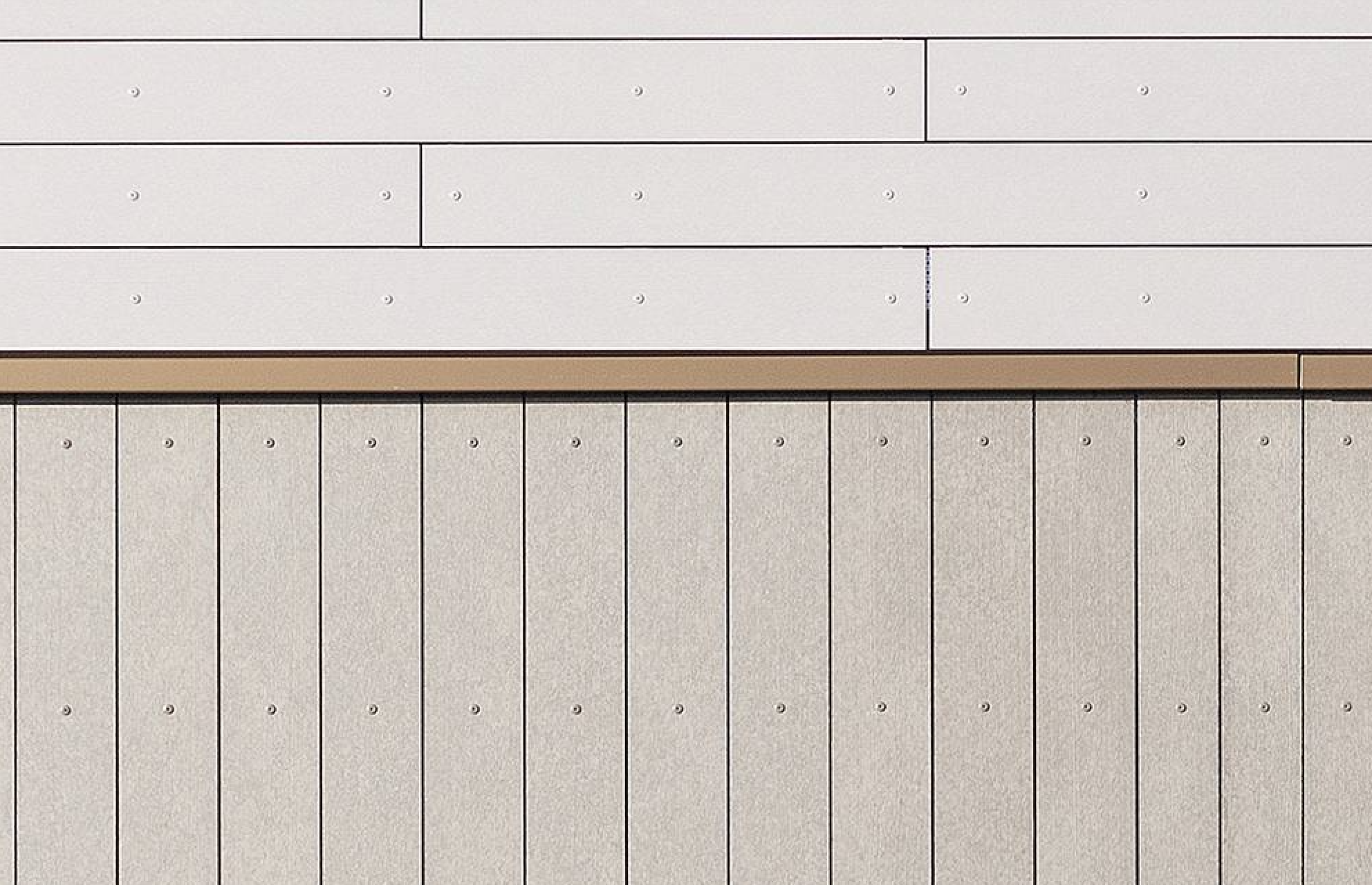High-Density vs. Medium-Density Fiber Cement Panels

Fiber cement panels are widely used in the construction industry for cladding and facade applications due to their durability, versatility, and aesthetic appeal. These panels come in various densities, typically categorized as high-density (HD) and medium-density (MD). The differences in density significantly affect the panels' technical properties, handling, fabrication, and application suitability. Our latest White Paper explores these differences, with a particular focus on the high-density Swisspearl panels compared to medium-density options like Nichiha and James Hardie.
Density and Classification
Density plays a crucial role in categorizing fiber cement panels. High-density panels are known for their enhanced mechanical strength and durability compared to medium-density panels. While ASTM standards do not prescribe exact density thresholds, high-density fiber cement panels typically have densities above 1,500 kg/m³, whereas medium-density panels fall within the range of 1,200 to 1,500 kg/m³. This density differentiation ensures that high-density panels meet the structural integrity standards necessary for their intended applications.
ASTM 1186 Criteria
Fiber cement panels are classified according to ASTM 1186 protocols based on their flexural strength, distinguishing between Grade II and Grade IV materials. Grade II boards exhibit wet and equilibrium strengths of 1,015 psi and 1,450 psi, respectively, while Grade IV boards boast significantly higher wet and equilibrium strengths of 2,610 psi and 3,190 psi. These distinctions are determined using ASTM 1185 testing methods, ensuring consistent measurement of these crucial properties.
Technical Properties
High-Density Fiber Cement Panels
High-density fiber cement panels, exemplified by Swisspearl products, have densities exceeding 1,500 kg/m³, offering the following technical advantages:
- Strength and Durability: HD panels exhibit superior mechanical strength, enhancing resistance to impact and wear, leading to an extended lifespan and reduced maintenance needs.
- Water Absorption and Hydric Movement: The dense structure of HD panels results in lower water absorption, minimizing hydric movement and increasing their resistance to expansion and contraction caused by moisture. This property is crucial for maintaining structural integrity and appearance in varying weather conditions.
- Height Limitations: HD panels have fewer restrictions regarding installation height, making them suitable for high-rise buildings and large facade areas.
Medium-Density Fiber Cement Panels
Medium-density fiber cement panels, such as those offered by Nichiha and James Hardie, have densities typically ranging from 1,200 to 1,500 kg/m³. The lower density affects their properties in several ways:
- Strength and Durability: MD panels are less strong than their HD counterparts, making them more susceptible to damage from impact and wear, resulting in higher maintenance and replacement costs over time.
- Water Absorption and Hydric Movement: MD panels absorb more water, increasing their tendency to expand and contract with changes in moisture levels, leading to potential issues such as warping and cracking, particularly in climates with significant humidity variations.
- Height Limitations: MD panels often have restrictions on the height at which they can be installed due to their lower strength and higher hydric movement.
Aesthetic & Application Considerations
High-Density Fiber Cement Panels
- Finishing and Appearance: HD panels often have a natural finish that can be left untreated or treated with specialized coatings that enhance their durability and aesthetic appeal. Swisspearl panels are known for their elegant appearance and wide range of color options.
- Application Suitability: HD panels are ideal for projects prioritizing strength, durability, and minimal maintenance, making them suitable for high-rise buildings, commercial facades, and areas exposed to harsh weather conditions.
Medium-Density Fiber Cement Panels
- Finishing and Appearance: MD panels are typically painted, providing a broad range of color options but also making them more susceptible to fading and weathering over time, potentially requiring regular maintenance and repainting to maintain their appearance.
- Application Suitability: MD panels are well-suited for residential and low-rise commercial buildings, offering a cost-effective solution but also requiring future maintenance expenses.
Conclusion
Choosing between high-density and medium-density fiber cement panels involves balancing technical performance, future maintenance requirements, and aesthetic preferences. High-density panels like Swisspearl offer superior strength, durability, and minimal maintenance, making them ideal for demanding applications. On the other hand, medium-density panels provide easier fabrication and handling, suitable for less demanding environments like residential construction.
Architects and engineers must carefully evaluate the specific requirements of each project to determine the most appropriate type of fiber cement panel. By understanding the differences in density and how they impact the panels’ properties, professionals can make informed decisions that enhance the performance, durability, and aesthetics of their building facades.
Questions? Need to know more? Call us at (888) 826-8453 or email info@claddingcorp.com. Download our White Paper exploring the topic here.